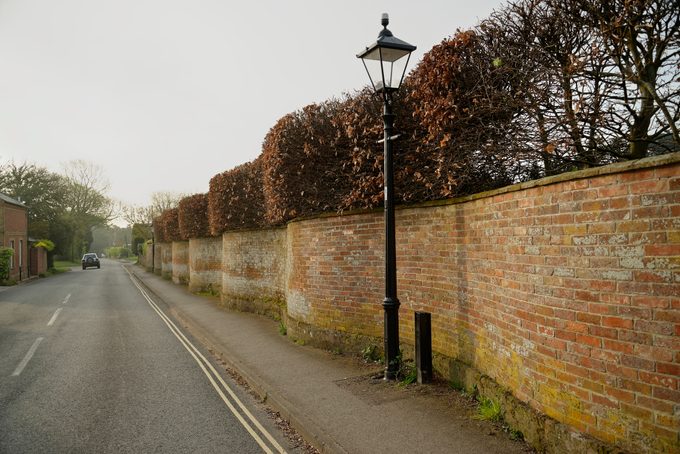If You See a Wavy Brick Wall, This is What It Means | The Family Handyman
Serpentine "crinkle crankle" walls are an aboriginal, artful thought that deserves a second expect.
Every once in a while you lot might discover a brick wall that serpentines instead of cutting straight across. These so-chosen crinkle crankle walls are more mutual in England, but are institute here and there in the U.S. also. Their leap across the Atlantic is probably thank you to Thomas Jefferson, who directed them to be built at the University of Virginia (UVA) in the 1800s.
"Thomas Jefferson was such a genius," says Gary Porter, technical director at the Masonry Informational Council. "Authorities at the time thought that Jefferson invented this design. However, he was merely adapting a well-established English fashion of structure."
What Are Those Wavy Brick Walls Chosen?
The term crinkle crankle walls probably came from the Old English language give-and-take for zigzag. Sometimes they are also called ribbon, wavy, radius, serpentine, sinusoidal or crinkum crankum walls. The Dutch engineers who originally built them in England called them slang muur, which translates to snake wall.
Why Are They Wavy?
They serpentine for economic system and strength, and probable also aesthetic reasons.
A unmarried row of bricks laid in a sine wave pattern is as stiff or stronger than a standard straight wall and requires fewer bricks. (In the case of UVA'due south walls, about 25 percent less.) That's considering straight walls demand 2 rows of bricks and sometimes buttresses to survive over time, whereas wavy walls need just a single row.
"So it was more efficient, and that'due south why they did information technology," says Porter. "These walls actually act like an curvation, and and so that makes it stiff for wind loads that might push on the wall."
At the Academy of Virginia, that's function of the story, just unfortunately not the whole story.
In 2022 UVA conducted a report about its historic ties to slavery. It discovered Jefferson also intended the eight-human foot-tall walls to mask the utilise of slave labor on the campus. The walls physically and visually separated white students from the enslaved laborers, while keeping the enslaved from seeing beyond the walls. It as well allowed slaveholders to more closely monitor the work being washed by slaves.
Where Are Wavy Brick Walls From?

The ones we know the most nigh were built in England from the 1600s to the 1800s. But the idea dates at to the lowest degree aboriginal Egypt, where archaeologists noted them in several cities. The first ones in England were built by Dutch engineers draining the marshlands of an area called the Fens.
In England, many of these garden walls are aligned from east to west, enabling fruit to grow on the due south-facing role of the walls. The waves kept fruit copse sheltered from the wind and warmed by the sun.
Are Brick Walls Ever Built This Way Today?
Not often. A curvy wall was more economical a century or two ago. Today, that isn't the case.
"Information technology's something that has died out," Porter says. "Using this blueprint today would require more than skill as the radius is more fourth dimension-consuming for the bricklayer to lay, [plus it uses] more than real estate with the widening foot-impress, resulting in more structure dollars required to build."
But Porter hopes it makes a comeback.
"Information technology's an bonny matter," he says. "We need this blazon of masonry to reemerge. I live westward of Chicago and our downtown has a lot of older buildings. When you look at the top, they have lots of details that really give the building some grapheme and you don't see that much today because of expense. People don't want to spend a lot of money."
Where Can I Come across Them Today?
The highest concentration of cockle crankle walls today are in Suffolk County in the Eastward Anglia expanse of England, although they are found elsewhere in the country. In the U.S., except for UVA, their locations are non well documented. We practice know of a few at a library in Chicago, and one at a cemetery in Bedrock, Colorado. If you know of 1 near yous, delight share it with united states!
Source: https://www.familyhandyman.com/article/wavy-brick-wall/
0 Response to "If You See a Wavy Brick Wall, This is What It Means | The Family Handyman"
Post a Comment